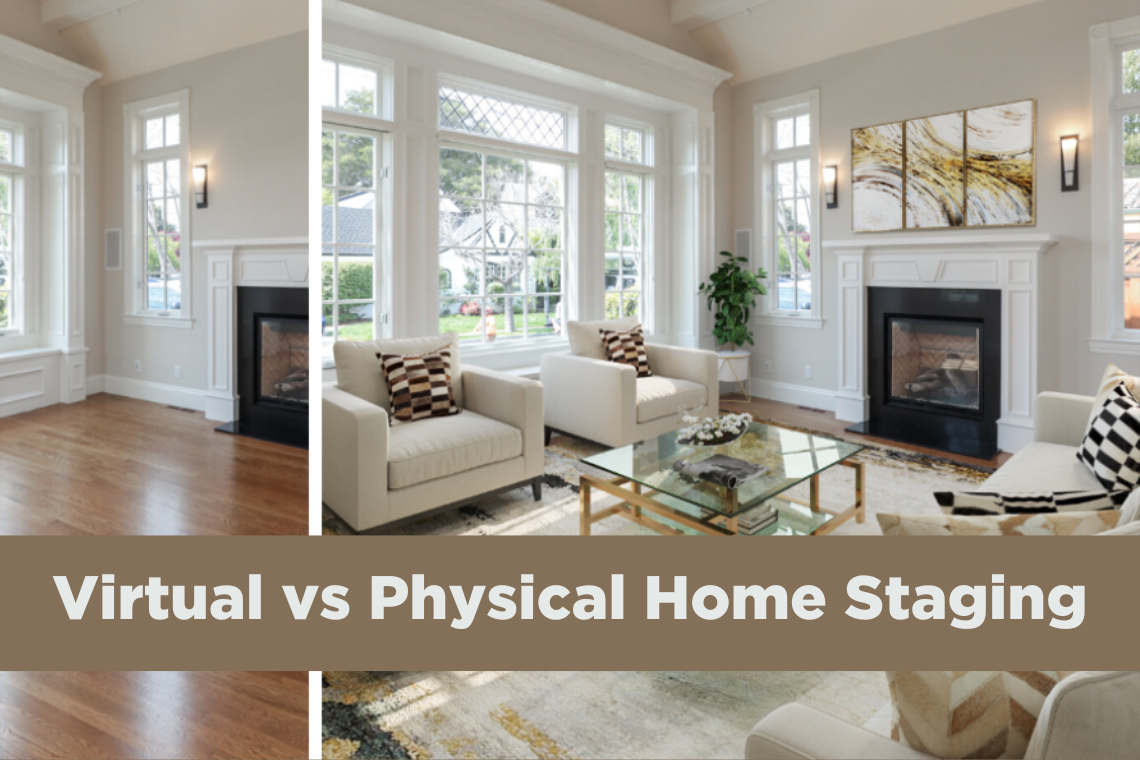
Jan. 31, 2024 | CREB
Virtual or physical home staging – which one is for you?
Home staging is the process of adding furniture, art and décor to a home to highlight its spaces and features to appeal to potential buyers. Home staging is not only the art of showing potential buyers the possibility of what their new home could look like, but also an effective way to increase its real estate value.According to REALTOR® magazine, staged homes on the market sold for 25 per cent more than homes without staging.
As the real estate market evolves, so does the home staging industry, which has adapted to technological advances, the COVID-19 pandemic, and the influx of millennials to the market.
Nowadays, many real estate agents and homeowners wonder what is the best way to market their properties and show buyers the potential of their next home – is it through virtual or physical staging?
The answer depends on their needs and preferences.
Virtual staging: Pros and cons
Virtual staging is the process of virtually adding digital furniture, art and decor to photos through a virtual staging software.
This software allows the addition of to-scale furniture and strategically emphasizes spaces in the property that attract buyers who are browsing properties online, which according to the National Association of REALTORS®, sit at 97 per cent.
Pros of virtual staging:
- Affordability: Many virtual staging companies charge per photo, which can range from $29-399, depending on the size of the room and the company providing these services.
- Timely: Companies offer a fast turnaround time from one to three days, depending on the clients' needs.
- Design flexibility: Virtual staging can offer unlimited design options to present variations on the same space. For example, buyers can see how a room can be adapted as a gym, home office, or studio.
Cons of virtual staging:
- Choosing the wrong company: Experts recommend studying a potential hire’s portfolio to ensure that the digital choices they offer accurately portray the dimensions, perspective, and scale of a property. Otherwise, this can lead to:
- Unrealistic expectations: After seeing photos of a virtually staged property, some buyers can feel disappointed when seeing empty rooms or the seller’s furnishings in-person.
Physical staging: Pros and cons
As the process of arranging furniture, art and decor, physical home staging shows a home’s best attributes and allows buyers to see the home’s architecture and scale easily.
Pros of physical staging:
- Immersion in the space: In a showing, buyers can envision themselves living in the space. This creates a personal experience that can establish an emotional bond with the home.
- Leaves a notable impression: Seeing the property size, flexibility, floor plans, and layout in- person allows buyers to be fully aware of what comes with their purchase.
- Expertise: Home stagers are trained experts who can capture a home’s personality into a vacant space and make it appear larger and more valuable. According to a survey by the Real Estate Staging Association, a professionally staged home spends 73 per cent less time on the market compared to those without staging.
Cons of physical staging:
- Price: A staging consultation can cost between $300-600 plus $500-600 for the actual home staging. While it is relatively costly, this process involves decluttering and reinventing the space with the support of a professional home stager.
- Turnaround time: The process of physical staging can take several days given the logistics involved. Homeowners must move all their furniture and decor out of their homes so home stagers can take property measurements, make an assessment, and install the furniture and accessories
Both approaches are beneficial as they add more value to a property. On its 2023 Profile of Home Staging, the National Association of REALTORS® stated that 20 per cent of buyers’ agents said that staging a home increased the dollar value offered between one and five per cent, compared to other similar homes on the market that were not staged.
At the end of the day, the best staging choice is the one that better fits your needs and those of your clients.
Tagged: Real Estate | Marketing | staging




